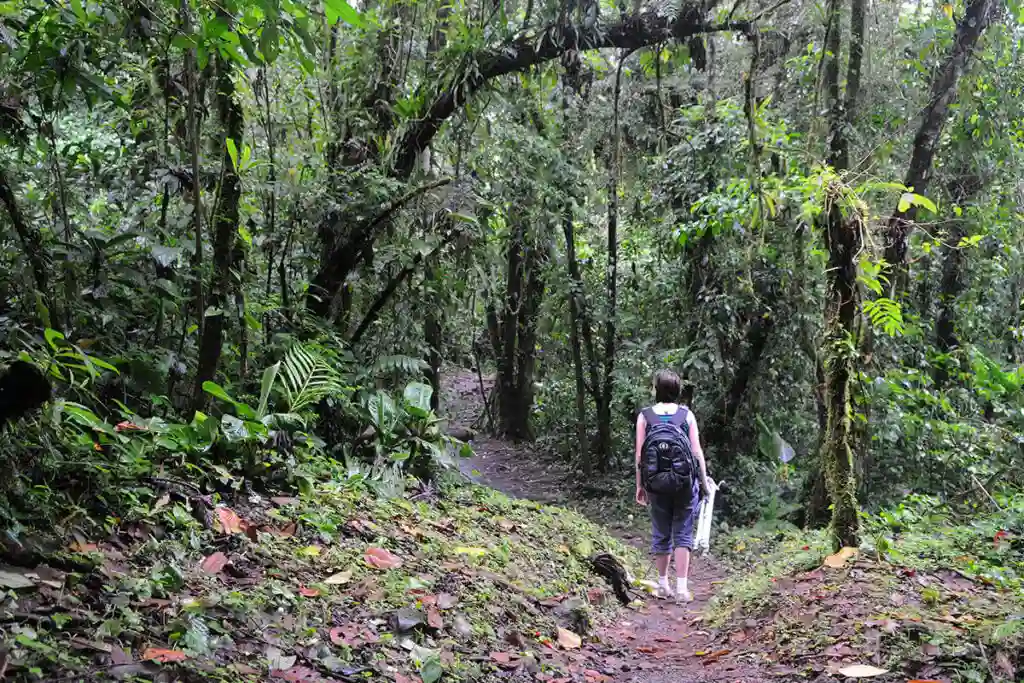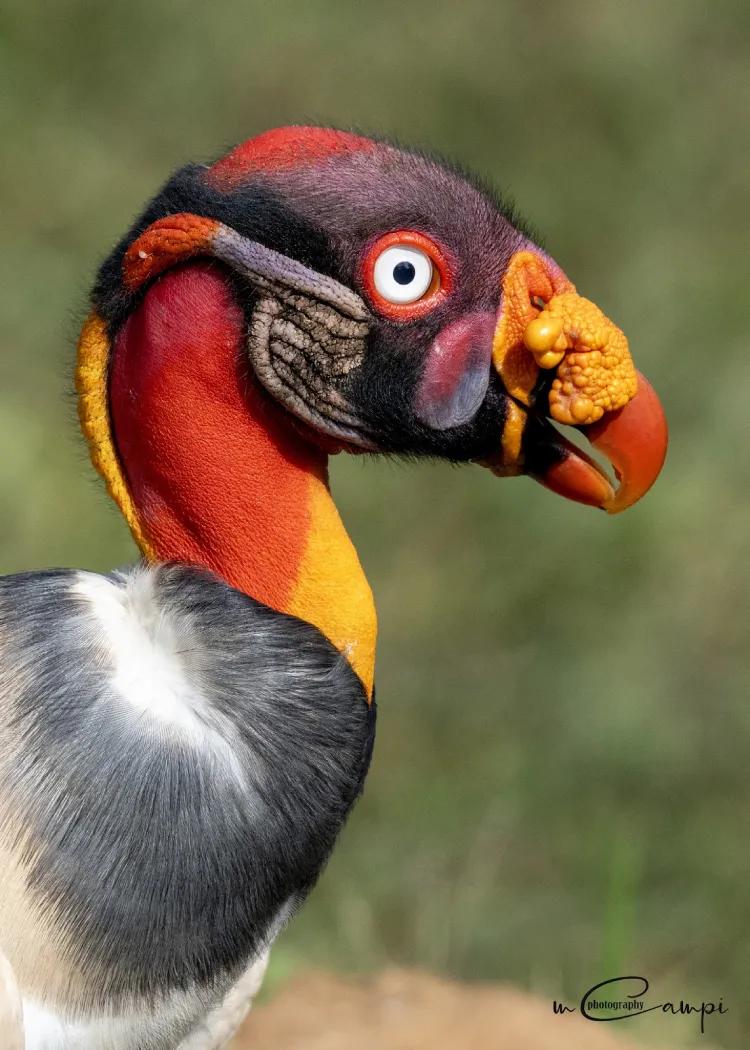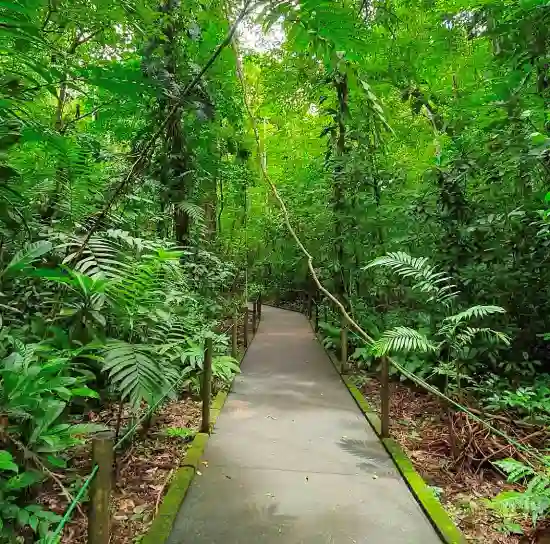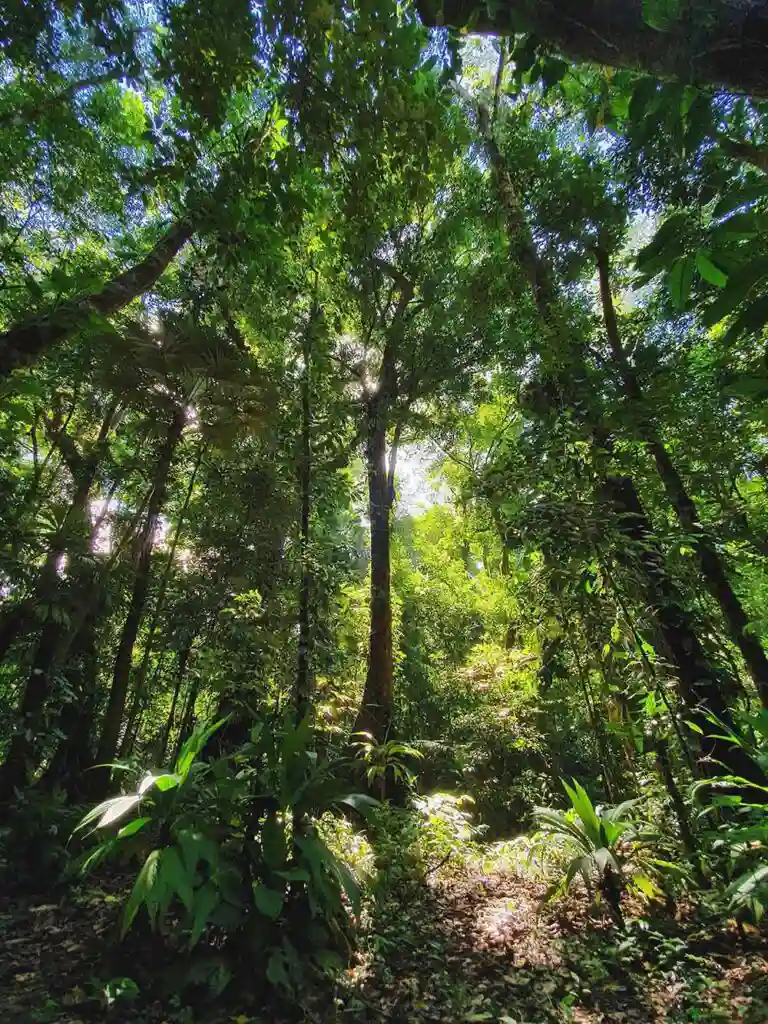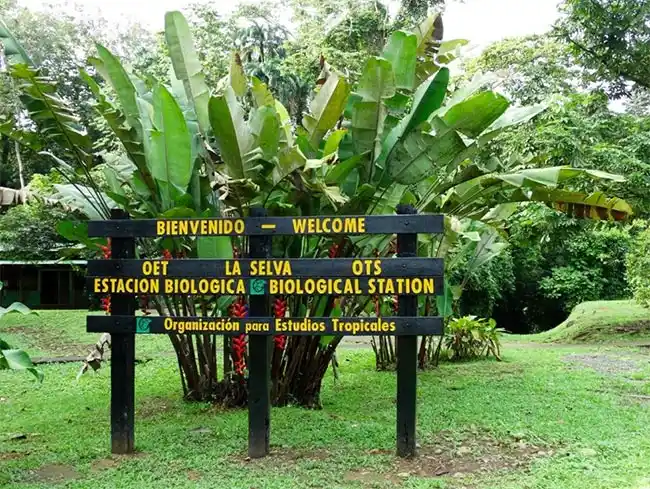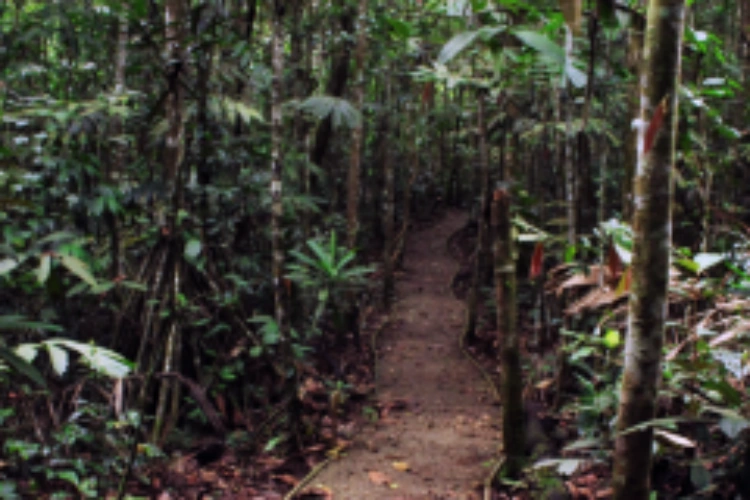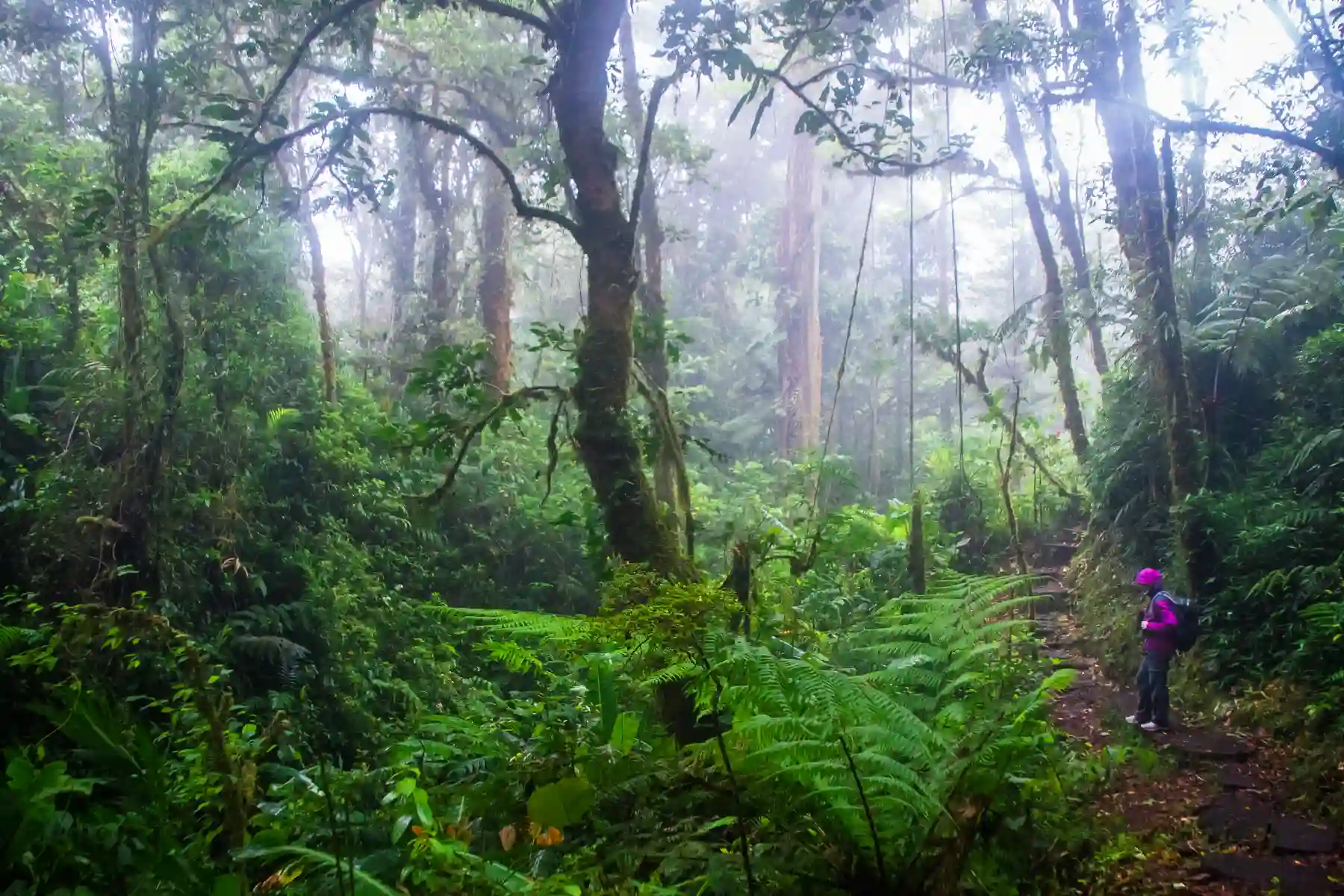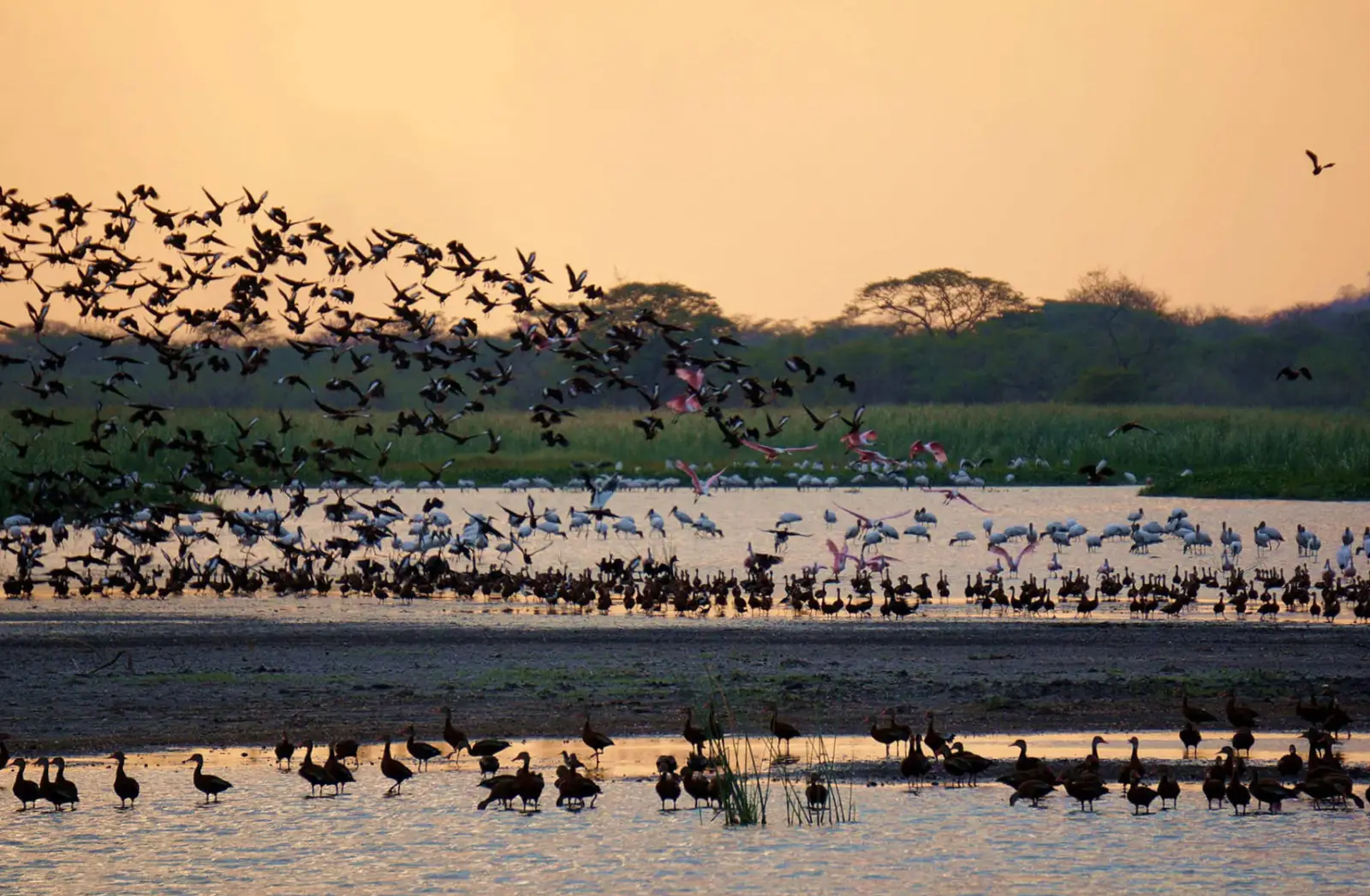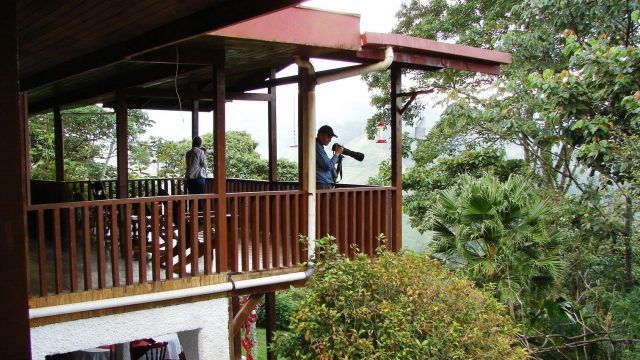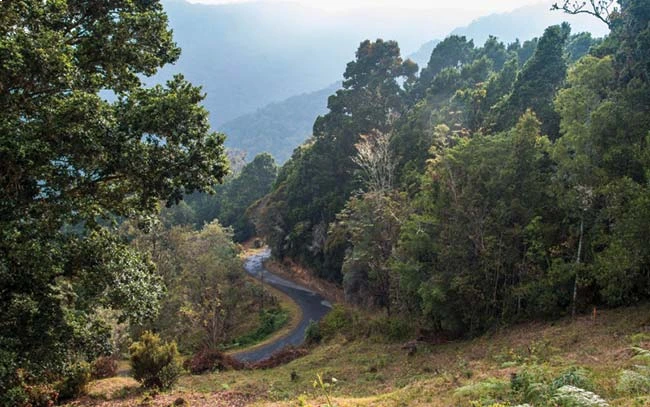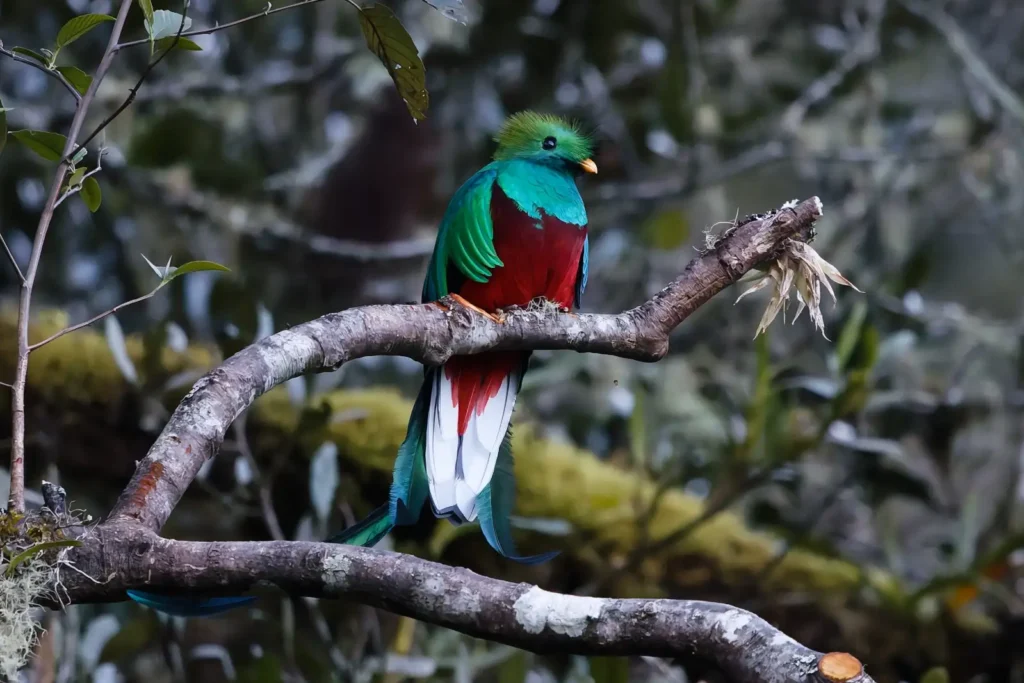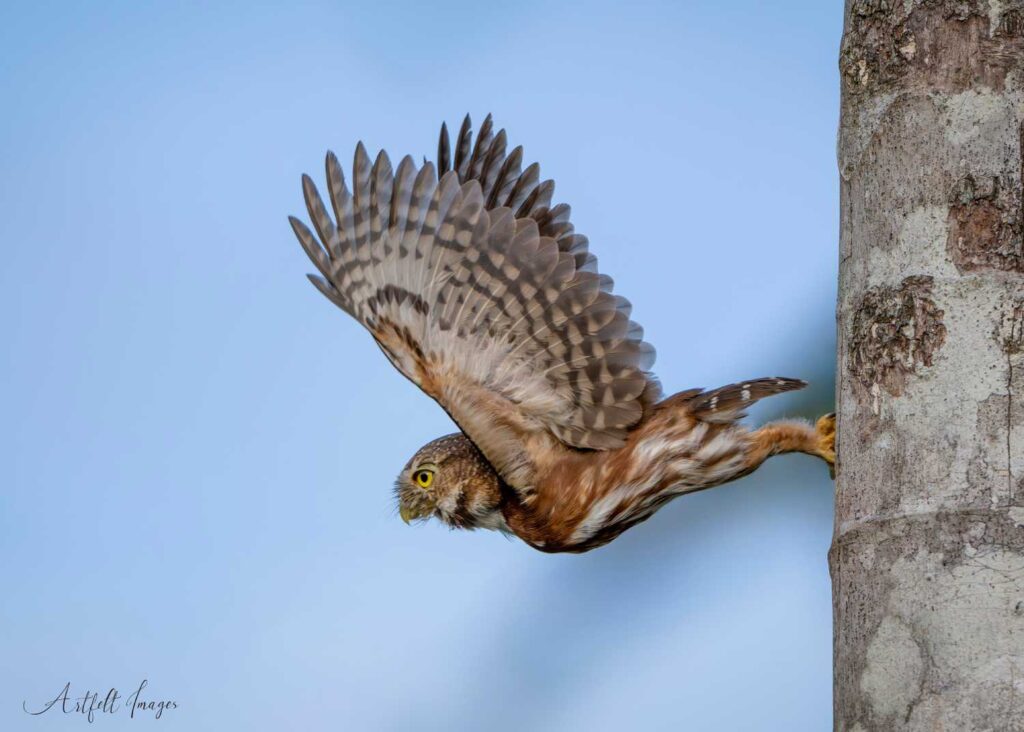Costa Rica Bird Checklist
Costa Rica bird checklist is such a treat! Over 900 species of birds on a tiny territory; the birding hotspots of Costa Rica include 12 ecosystems and it is possible to find the most amazing bird species in this country within relatively short distances. No wonder Costa Rica Bird hotspots are recognized worldwide among birding experts and that bird watching in Costa Rica is considered an outstanding experience.
Download your copy of Costa Rica bird checklist in PDF format – click here to download –
Happy birding!
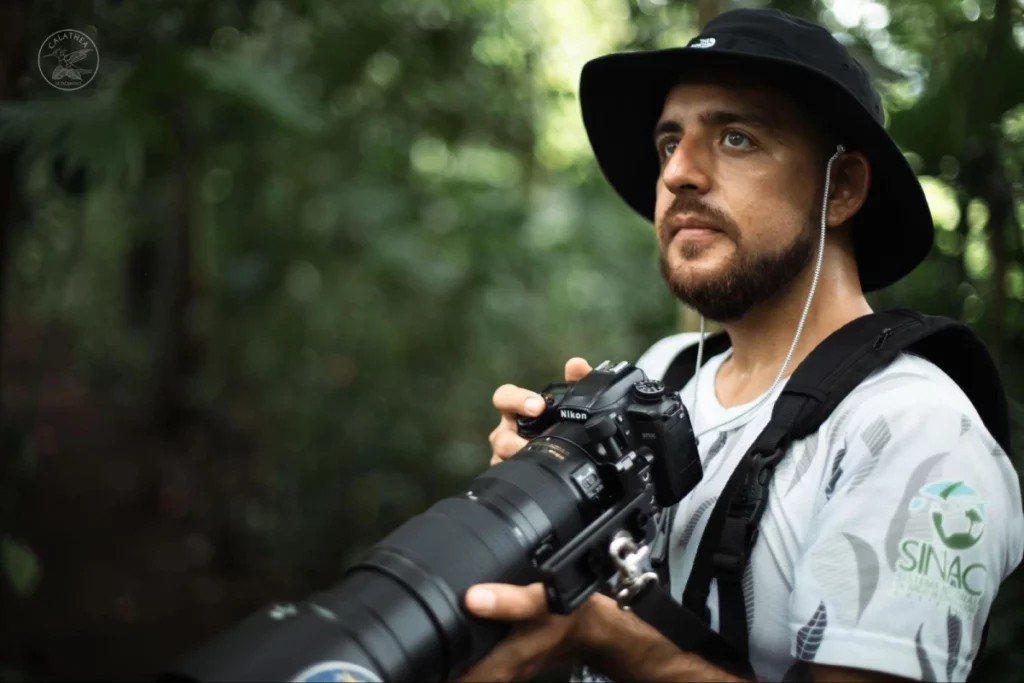
Best Birding Hotspots in Costa Rica
Arenal Observatory Lodge Reserve
The town of La Fortuna is home to the majestic Arenal Volcano. This perfect cone volcano casts an imposing backdrop to the small town and surrounding farmlands. The Caribbean Foothills, with pre-montane forest, primary tropical rainforest, secondary forest, and pasture lands assures that birders and photographers will have an amazing experience observing many bird species and getting the top shots of their trip. A stay at the Arenal Observatory Lodge is a must.
The lodge was formerly the research for The Smithsonian Institute. It now serves as a comfortable lodge for birders, photographers, and nature lovers. With an 870 acre private reserve, guests can expect to see an extremely wide variety of birds,...
Habitat Types:Region:Iconic Species:Montezuma Oropendola, Scarlet-rumped Tanager, Emerald Tanager, Blue-gray Tanager, Silver-throated Tanager, Bay-headed Tanager, Red-legged Honeycreeper, Green Honeycreeper, Shining Honeycreeper, Tawny-capped Euphonia, Black-crested Coquette, Brown Violetear, Great Curassow, Keel-billed Toucan, Lovely Cotinga, Bare-crowned Antbird, Chestnut-backed Antbird, Nightingale Wren, Tawny-faced Gnatwren, Black-cheeked Woodpecker, Streak-crowned Antvireo, Sharpbill, Golden-crowned Warbler, Orange-bellied Trogon, Gartered Trogon, Black-headed Nightingale Thrush, Long-tailed Tyrant, Ornate Hawk-Eagle, Black Hawk-Eagle, White Hawk, King Vulture, The Brown-Hooded Parrot, Black-cowled Oriole, Laughing Falcon, Rufous-tailed Jacamar, Broad-billed Motmot, Rufous Motmot, Great Potoo, Gray-headed Kite, Great Antshrike, Black-headed Tody-Flycatcher, Sepia-capped Flycatcher, Keel-billed Motmot, Scale-crested Pygmy-Tyrant, Bronze-tailed Plumeleteer, Long-billed Hermit, Stripe-throated Hermit, Crested Guan, Yellow-eared Toucanet, Crimson-collared Tanager, Rufous-winged Tanager, Hepatic Tanager, Carmiol’s Tanager, White-throated Thrush, Black-crowned Tityra, Masked Tityra, Golden-olive Woodpecker, Gray-crowned Yellowthroat, Great Black Hawk, Eastern Meadowlark, Scarlet-thighed Dacnis, Yellow-throated Euphonia, Violet-headed Hummingbird, Magenta-throated Woodstar, Steely-vented Hummingbird, Bicolored Antbird, Dull-mantled Antbird, Ocellated Antbird, Spotted Antbird, Dusky Antbird, Zeledon’s Antbird, Black-throated Wren, Song Wren, Thicket Antpitta, Bare-necked Umbrellabird, Smoky-brown Woodpecker, Spotted Woodcreeper, Tropical Pewee, Yellow-billed Cacique, White-crowned Parrot, White-necked Puffbird, Gray-headed Chachalaca, Brown Jay

Boca Tapada
Near the Northern border of Costa Rica and Nicaragua lies the small town of San Carlos. The Laguna del Lagarto Eco-Lodge sits there, in the middle of 1235 acres of pristine tropical rainforest. So far, there have been 350 species of birds logged at and around the lodge. There are 10 kilometers of rainforest trails, hummingbird gardens, a blind to photograph King Vultures, and an excellent photography platform all ready to host avid bird watchers and passionate photographers.
Habitat Types:Region:Iconic Species:The Brown-Hooded Parrot, Orange-chinned Parakeet, Keel-billed Toucan, Yellow-throated Toucan, Collared Aracari, Montezuma Oropendola, Black-cowled Oriole, Red-legged Honeycreeper, Green Honeycreeper, Black-cheeked Woodpecker, Olive-backed Euphonia, Scarlet-rumped Tanager, Tawny-faced Quail, Olive-backed Quail-Dove, Agami Heron, Uniform Crake, Green Ibis, Semiplumbeous Hawk, Sungrebe, Central American Pygmy-Owl, MiddleAmerican Screech-Owl, Common Potoo, Pied Puffbird, Scaly-throated Leaftosser, Plain-brown Woodcreeper, Long-tailed Woodcreeper, Black striped Woodcreeper, Streak-crowned Antvireo, Checker-throated Antwren, White-flanked Antwren, Bare-crowned Antbird, Gray-headed Piprites, Speckled Mourner, Snowy Cotinga, Tawny-faced Gnatwren, Nicaraguan Seed-Finch, King Vulture

Carara National Park
Habitat Types:Region:Iconic Species:Dusky Antbird, Chestnut-backed Antbird, Common Tody-Flycatcher, Buff-rumped Warbler, Black-bellied Wren, Riverside Wren, Northern Bentbill, Barred Antshrike, Black-hooded Antshrike, The Brown-Hooded Parrot, Scarlet Macaw, Cocoa Woodcreeper, Masked Tityra, Orange-collared Manakin, Baird’s Trogon, Black-headed Trogon, Slaty-tailed Trogon, Stripe-throated Hermit, King Vulture, Pale-billed Woodpecker, Golden-naped Woodpecker, Red-legged Honeycreeper, Bay-headed Tanager, Gray-headed Tanager, Great Tinamou, Black-faced Antthrush, Fiery-billed Aracari, Laughing Falcon, Crested Guan, Mangrove Hummingbird, Amazon Kingfisher, Rufous Piha, Rufous-tailed Jacamar, American Pygmy Kingfisher, Boat-billed Heron, Yellow-bellied Flycatcher, Boat-billed Flycatcher, Yellow-olive Flycatcher, Sulphur-rumped Flycatcher, Slate-headed Tody-flycatcher, Ruddy-tailed Flycatcher, Ochraceous Flycatcher, Chestnut-sided Warbler, Worm-eating Warbler, Kentucky Warbler, Yellow-throated Vireo, Ruddy Quail-dove, Rufous-and-white Wren, Dot-winged Antwren, Long-billed Gnatwren, Rufous-breasted Wren, Plain Xenops, Wedge-billed Woodcreeper, Northern barred Woodcreeper, Blue-crowned Manakin, Purple-crowned Fairy, Long-tailed Hermit, Streaked Flycatcher, Black-throated Trogon, Violaceous Trogon, Lineated Woodpecker, Cherrie’s Tanager, Golden-hooded Tanager, Summer Tanager, White-shouldered Tanager, White-collared swift, Blue-black Grosbeak, Variable Seedeater, Rose-throated Becard, White-winged Becard, Golden-crowned Euphonia, Buff-throated Foliage-gleaner, Plain-capped Starthroat, Chestnut-mandibled Toucan, Bright-rumped Attila, Chestnut-collared Swift, Common Black Hawk, Gray Hawk, Bare-throated Tiger-Heron, Rufous-necked Wood-Rail, Double-striped Thick-knee, Muscovy Duck, Tawny-crowned Greenlet, Painted Bunting, Blue-throated Goldentail, Ovenbird, Olive Sparrow, Orange-billed Sparrow, Gray-necked Wood-rail, Buff-throated Saltator

Corcovado National Park
Ranked by National Geographic as one of the top three National Parks of the world and the most biologically intense place on Earth, Corcovado is a nature lovers paradise. The park is comprised of an enormous 103,290 acres (41,800 hectares) that fill up nearly a third of the Osa Peninsula.
Understandably, it’s one of Costa Rica’s premier wildlife viewing destinations, as its rain forests host an unbelievable amount of biodiversity – over 140 species of mammals, including the jaguar and endangered Baird’s tapir, 400 species of birds and 116 species of reptiles. It is one of the few places to see all four species of monkeys that inhabit Costa Rica. For nature lovers,...
Habitat Types:Region:Iconic Species:King Vulture, Red-capped Manakin, White-tipped Sicklebill, White-throated Crake, Northern Jacana, Yellow-throated Toucan, Common Potoo, Mangrove Hummingbird, Scarlet-rumped Tanager, Fasciated Tiger-Heron, Solitary Eagle, Ornate Hawk-Eagle, Black Hawk-Eagle, Black-cheeked Ant-Tanager, Gray-headed Tanager, Shrike-Tanager, Striped Wood Hunter, Marbled Wood-Quail, Black striped Woodcreeper, Tawny-winged Woodcreeper, Gray-cowled Wood-Rail, Golden-naped Woodpecker, Red-rumped Woodpecker, Long-tailed Woodcreeper, Charming Hummingbird, White-crested Coquette, Black-bellied Wren, Riverside Wren, Orange-collared Manakin, Great Curassow, Uniform Crake, Blue-headed Parrot, Brown-throated Parakeet, Green-breasted Mango, Striped Cuckoo, Red-breasted Meadowlark, Southern Lapwing, Fiery-billed Aracari, Pearl Kite, Ruddy-breasted Seedeater, Slate-colored Seedeater, Yellow-bellied Seedeater, Collared Forest-Falcon, Black-hooded Antshrike, Tiny Hawk, White Hawk, Common Pauraque, Spectacled Owl, Striped Owl, Turquoise Cotinga, Yellow-billed Cotinga, Spot-crowned Euphonia, Great Tinamou, Little Tinamou, Black-faced Antthrush, Chestnut-backed Antbird, Bronzy Hermit, Baird’s Trogon, Band-tailed Barbthroat, Yellow-bellied Tyrannulet, Golden-crowned Spadebill, Northern Royal Flycatcher, Rufous Piha

La Selva Biological Station
La Selva’s influence on tropical ecology is immeasurable. It serves as a key training and research site for numerous scientists in many fields of study. La Selva Research Station pioneered private forest conservation in Costa Rica, as it was the first of what is now a large network of private forest reserves in the country. It has provided a base for the study of all tropical flora and fauna. The species richness of La Selva is outstanding, with more than 2,077 species of plants; 125 species of mammals (72 of them bats); 470 species of birds; 48 amphibian species; 87 species of reptiles; 45 species of freshwater fish;...
Habitat Types:Region:Iconic Species:Tiny Hawk, Red-legged Honeycreeper, Ornate Hawk-Eagle, Yellow-billed Cotinga, Pied Puffbird, Snowy Cotinga, Three-wattled Bellbird, Uniform Crake, Green Ibis, Sunbittern, Sungrebe, Great Green Macaw, White-collared Manakin, Little Tinamou, Great Tinamou, Slaty-tailed Trogon, Black-throated Trogon, Gartered Trogon, Broad-billed Motmot, Rufous Motmot, Bronze-tailed Plumeleteer, Black-headed Tody-Flycatcher, Great Antshrike, Dusky Antbird, Chestnut-colored Woodpecker, Pale-billed Woodpecker, Olive-backed Quail-Dove, Great Curassow, Crested Guan, White-necked Puffbird, Black-throated Wren, Shining Honeycreeper, Crimson-collared Tanager, Collared Forest-Falcon, King Vulture, MiddleAmerican Screech-Owl, Spectacled Owl, Great Potoo, Purple-throated Fruit crow, Russet-naped Wood-Rail, Mealy Parrot, Olive-throated Parakeet, Slaty-breasted Tinamou, Blue-chested Hummingbird, Black-capped Pygmy-Tyrant, Brown-capped Tyrannulet, White-ringed Flycatcher, Fasciated Antshrike, Cinnamon Woodpecker, White-fronted Nunbird, Stripe-breasted Wren, Bay Wren, Canebrake Wren, Dusky-faced Tanager, Plain-colored Tanager, Red-throated Ant-Tanager, Crested Owl, Black-and-white Owl, Short-tailed Nighthawk

Los Cusingos – San Isidro de General
This intermontane, beautiful valley is just east of the highest peak in Costa Rica, Mt. Chirripo (12,532 ft.). While primarily an agricultural area of the country, visitors will also find numerous groves of secondary forest. Being at the foothills of the Talamanca Mountains provides numerous bird habitats including foothills, middle elevations, tropical and cloud forests. This diversity provides the perfect environment for an extremely wide array of bird species. San Isidro del General was home to the famous Naturalist, Dr. Alexander Skutch. His home, Los Cusingos, still stands and is a wonderful place for birders to visit for bird watching and photography.
Habitat Types:Region:Iconic Species:Bay-headed Tanager, Gray-headed Tanager, Scarlet-rumped Tanager, Silver-throated Tanager, Speckled Tanager, Turquoise Cotinga, Red-capped Manakin, Blue-crowned Manakin, Orange-collared Manakin, Lesson’s Motmot, Golden-crowned Spadebill, Riverside Wren, Rufous-breasted Wren, Great Tinamou, Fiery-billed Aracari, Baird’s Trogon, Bicolored Antbird, Chestnut-backed Antbird, Black-faced Antthrush, Common Potoo, Golden-naped Woodpecker, Northern barred Woodcreeper, White-crested Coquette, Bronzy Hermit, Long-billed Hermit, Stripe-throated Hermit, Yellow-bellied Tyrannulet, Spot-crowned Euphonia, Blue Dacnis, Shining Honeycreeper, Red-legged Honeycreeper, Green Honeycreeper, Scaly-breasted Hummingbird, Scaly-breasted Wren, Red-crowned Ant-Tanager, Red-crowned Woodpecker, Ruddy Woodcreeper, Olivaceous Piculet

Monteverde Cloud Forest Reserve
Founded in 1972, the Monteverde Cloud Forest Biological Reserve is among the most famous reserves in the world for its biodiversity, conservation, contributions, and scientific research. This 7,400 acre parcel of land holds 2.5% of the world’s biodiversity, and it is one of the most important private reserves in Costa Rica.
The Monteverde Cloud Forest is set at an elevation of 4724 ft (1440 m) above sea level. At this elevation, the Cloud Forest Reserve, Santa Elena Reserve, and Curi Cancha Reserve attract more than 400 different species of birds.
Habitat Types:Region:Iconic Species:Buffy Tuftedcheek, Golden-browed Chlorophonia, Green-Crowned Brilliant Hummingbird, Violet Sabrewing, Scintillant Hummingbird, Resplendent Quetzal, Chestnut-capped Brushfinch, Long-tailed Manakin, White-eared Ground-Sparrow, Spotted Barbtail, Three-striped Warbler, Costa Rican Warbler, Golden-crowned Warbler, Streak-breasted Treehunter, Lineated Foliage-gleaner, Azure-hooded Jay, Ruddy Treerunner, Silvery-fronted Tapaculo, Spangle-cheeked Tanager, Red-faced Spinetail, Black-breasted Wood-Quail, Buff-fronted Quail-dove, Chiriqui Quail-Dove, Three-wattled Bellbird, Purple-throated Mountain Gem, Coppery-headed Emerald, Black-headed Nightingale Thrush, Orange-billed Nightingale-Thrush, Slaty-backed Nightingale-Thrush, Orange-bellied Trogon, Prong-billed Barbet, Gray-throated Leaftosser, Tawny-throated Leaftosser

Palo Verde National Park
Palo Verde is a remote national park covering 16,000 hectares of the Pacific Slope of Costa Rica. Located in the province of Guanacaste, the park is a combination of dry tropical forest, marshlands, mangroves, and secondary forest. The park is a very important breeding ground for resident birds and the wintering home of migratory species. The combination of rivers, wetlands, and forest creates an extraordinary habitat for hundreds of species of birds. Palo Verde is also the top spot for seeing the Jabiru Stork.
Habitat Types:Region:Iconic Species:Jabiru, Roseate Spoonbill, Northern Jacana, Boat-billed Flycatcher, Bare-throated Tiger-Heron, Common Black Hawk, Gray Hawk, Roadside Hawk, Plain-capped Starthroat, Green-breasted Mango, Olive Sparrow, Long-tailed Manakin, Black-headed Trogon, Spotted Sandpiper, Solitary Sandpiper, Purple Gallinule, Limpkin, Wood Stork, White Ibis, Little Blue Heron, Tricolored Heron, Green Heron, Great Blue Heron, Yellow-crowned Night-heron, Black-crowned Night-heron, Peregrine Falcon, Cattle Egret, Snowy Egret, Mangrove Hawk, Osprey, Snail Kite, Canivet’s Emerald, Common Ground-dove, White-winged Dove, Stripe-headed Sparrow, Thicket Tinamou, Rufous-naped Wren, Banded Wren, White-fronted Parrot, Yellow-naped Parrot, Turquoise-browed Motmot, White-throated Magpie Jay, Orange-fronted Parakeet, Cinnamon Hummingbird, Spot-breasted Oriole, Streak-backed Oriole, White-lored Gnatcatcher, Brown-crested Flycatcher, Rufous-capped Warbler

Rancho Naturalista Gardens, Feeders & Trails
Located on the Caribbean Foothills of the Turrialba Volcano, the private reserve of Rancho Naturalista is a paradise for birders and bird photographers. There are more than 450 different species of birds recorded at the lodge and surrounding forest. A visit here is a combination of enjoying the spectacular feeders from the cozy terrace, exploring the forest trails, visiting the lush gardens (famous for the Snowcap Hummingbird), watching the quiet pools each afternoon as the hummingbirds come to bathe, and checking the quiet river banks for Sunbitterns, dippers, and more. Along with the superb birding at Rancho Naturalista, the area also gives opportunities to visit Cerro El Silencio, Tuis River Valley,...
Habitat Types:Region:Iconic Species:Black-crested Coquette, Tawny-throated Leaftosser, Black Hawk-Eagle, Ornate Hawk-Eagle, Sunbittern, Azure-hooded Jay, Green Kingfisher, Snowcap Hummingbird, Tawny-chested Flycatcher, White-throated Flycatcher, Purplish-backed Quail-Dove, White-crowned Manakin, Northern Schiffornis, Gray-headed Piprites, Red-fronted Parrotlets, Lovely Cotinga, Rufous-browed Tyrannulet, Torrent Tyrannulet, Rufous-rumped Antwren, Green-fronted Lancebill, Sulfur-winged Parakeets, Strong-billed Woodcreeper, Black-banded Woodcreeper, Rufous-breasted Antthrush, Sharpbill, Ashy-throated Chlorospingus, Black-and-yellow Tanager, Emerald Tanager, Speckled Tanager, Spangle-cheeked Tanager, Buff-rumped Warbler, Lanceolated Monklet, American Dipper, Amazon Kingfisher

San Gerardo de Dota
The Talamanca Mountains are a Tropical Cloud Forest area. Almost three-quarters of all the trees are White Oak. This lush, gorgeous forest is vibrant with bromeliads, mosses, ferns, and orchids. The air plants and epiphytes flourish in this cool, damp climate. With a fantastic combination of highlands, middle elevation, and paramo, the area provides birders and bird photographers a wonderland of species to see and photograph. San Gerardo de Dota is known as the most reliable place in the country to observe the Resplendent Quetzal, probably the most famous bird of Costa Rica and maybe of all of Central America. It is often found feeding in a fruiting wild avocado trees, the...
Habitat Types:Region:Iconic Species:Resplendent Quetzal, Spangle-cheeked Tanager, Golden-browed Chlorophonia, Azure-hooded Jay, Buffy-crowned Wood-Partridge, Costa Rican Warbler, Silvery-fronted Tapaculo, Streak-breasted Treehunter, Unspotted Saw-whet Owl, Chestnut-capped Brushfinch, Large-footed Finch, Buff-fronted Quail-dove, Torrent Tyrannulet, Scale-crested Pygmy-Tyrant, American Dipper, Ruddy Treerunner, Black-breasted Wood-Quail, Buffy Tuftedcheek, Sulfur-winged Parakeets, Ornate Hawk-Eagle, Spotted Barbtail, Red-faced Spinetail, Lineated Foliage-gleaner, Tropical Parula, Zeledon’s Antbird, Green-fronted Lancebill, Highland Tinamou, Scaled Antpitta, White-naped Brush finch, Golden-bellied Flycatcher, Slaty-capped Flycatcher, Tufted Flycatcher, Black-capped Flycatcher, Common Chlorospingus, Streaked Xenops, Brown-billed Scythebill, Elegant Euphonia, Costa Rican Pygmy Owl, Bare-shanked Screech-Owl, Dusky-faced Tanager, Bat Falcon, Barred Parakeet, Ochraceous Pewee, Spot-crowned Woodcreeper, Gray-breasted Wood-Wren, Spotted Wood-Quail, Collared Redstart, Slate-throated Redstart, Collared Trogon, White-winged Tanager, Emerald Toucanet, Silver-throated Jay, Lesser Violetear, White-throated Mountain-gem, Ruddy-capped Nightingale-Thrush, Wren thrush, Black Guan, Flame-throated Warbler, Ochraceous Wren, Sooty-capped Chlorospingus, Black-cheeked Warbler

Bird Watching Tours: Privately Guided vs Scheduled Group vs Independent… Differences?
| Feature | Privately Guided Tour | Scheduled Group Tour | Independent Tour |
|---|---|---|---|
| Tour Type | Custom | Pre-scheduled | Custom |
| Guide Availability | Dedicated Guide from arrival to departure | Dedicated Guide from arrival to departure | Local guides for specific excursions only |
| Transportation | Guide as driver (small groups) or separate driver (larger groups) | Generally separate driver | Private transfers or rental car |
| Birding Flexibility | Maximum flexibility, guide available at all times | Flexible within group schedule | Limited to scheduled excursions |
| Species Count | Highest (approximately double other tours) | High (approximately double independent tours) | Good, but lower than guided tours |
| Birding Style | Matches guests' pace and intensity | Matches group's pace and intensity | Self-paced with scheduled guided excursions |
| Tour Dates | Fully Flexible | Fixed departure dates | Fully Flexible |
| Additional Activities | Can be added to customized tour | Not Flexible | Fully Flexible |
| Airport 'Meet and Greet' | Included | Not included | Included |
| Airport Pickup | Included | Included | Included |
| Impromptu Stops | Unlimited | Based on group consensus | Not included |
| Meals Included | All meals (B/L/D) | Usually all meals | Breakfast Only |
| Official Birding Checklist | Included | Usually included | Not included |
| Daily Species Recap | Included | Included | Not included |
| 24/7 In-country Assistance | Included | Included | Included |
Check Out Our Blog
We share our knowledge and expertise with all the briding nerds out there: enthusiasts, beginners, experts...
